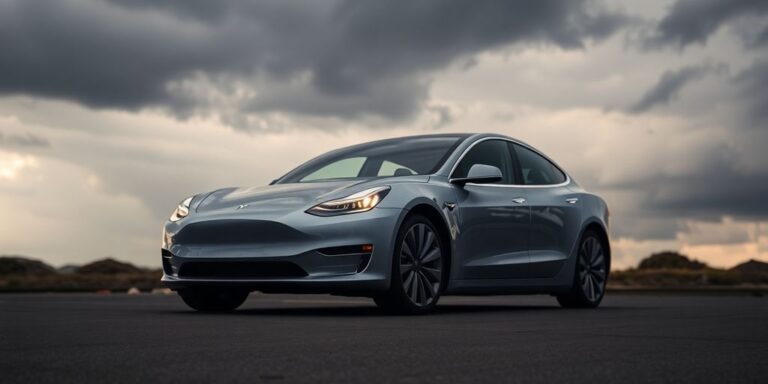Table of Contents
Tesla’s stock (TSLA) faced significant volatility at the start of 2025 after the company reported a substantial miss in its fourth-quarter vehicle deliveries. The electric vehicle manufacturer delivered 495,930 vehicles globally, falling short of analyst expectations of approximately 510,400. This disappointing performance marks the first yearly sales decline for Tesla, raising concerns about competition and market demand.
Key Takeaways
- Tesla delivered 495,930 vehicles in Q4 2024, missing estimates of 510,400.
- Total deliveries for 2024 reached 1.78 million, below the expected 1.8 million and the previous year’s total.
- The stock dropped over 6% following the announcement.
- Analysts suggest that competition from companies like BYD is impacting Tesla’s market position.
- Despite the decline, some analysts remain optimistic about Tesla’s growth potential in 2025.
Delivery Performance Overview
In the fourth quarter, Tesla’s delivery numbers showed a slight increase compared to the previous quarter (463,000) and the same quarter last year (484,500). However, the overall annual performance was disappointing, with 2024 deliveries falling short of 2023’s figures. The following table summarizes Tesla’s delivery performance:
| Quarter | Deliveries (in thousands) |
|---|---|
| Q4 2023 | 484.5 |
| Q3 2024 | 463.0 |
| Q4 2024 | 495.9 |
Yearly Sales Decline
The total number of vehicles delivered in 2024 was 1.78 million, which is a decline from the previous year’s total of 1.8 million. This marks a significant shift for Tesla, which had previously enjoyed a robust growth trajectory. The decline in deliveries is attributed to several factors, including:
- Increased competition from rivals like BYD, which reported 4.3 million global deliveries in 2024.
- Economic conditions affecting consumer demand for electric vehicles.
- Tesla’s own strategic decisions, including preparations for launching a next-generation vehicle at Gigafactory Texas.
Analyst Reactions
The market’s reaction to Tesla’s delivery miss was swift, with the stock dropping over 6% on the day of the announcement. Investors were caught off guard by the year-over-year decline, especially given Tesla’s previous growth rates. However, some analysts believe this is a temporary setback.
Dan Ives, an analyst at Wedbush, expressed confidence in Tesla’s ability to rebound in 2025, citing:
- Expected delivery growth of 20%-30%.
- The launch of a lower-priced EV to stimulate demand.
- Increased adoption of Tesla’s Full Self-Driving (FSD) software and the rollout of robotaxi testing.
Looking Ahead
Despite the recent challenges, many analysts remain bullish on Tesla’s long-term prospects. The focus for 2025 will be on reaccelerating delivery growth and enhancing FSD penetration. Ives noted that any sell-off in response to weaker Q4 numbers presents a buying opportunity for investors.
As Tesla navigates this period of volatility, the company’s strategic initiatives and market adaptations will be crucial in determining its future trajectory in the competitive electric vehicle landscape.


